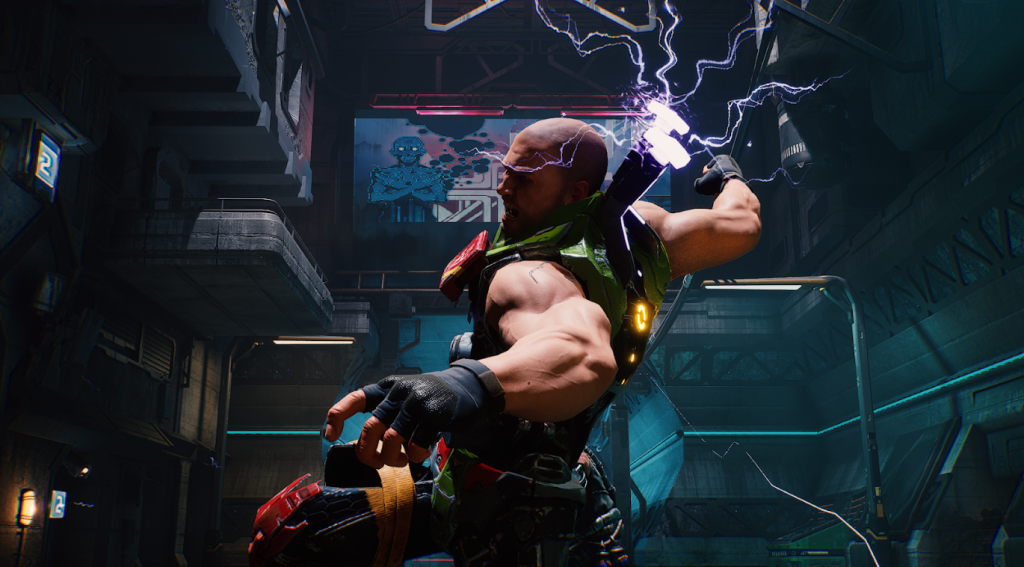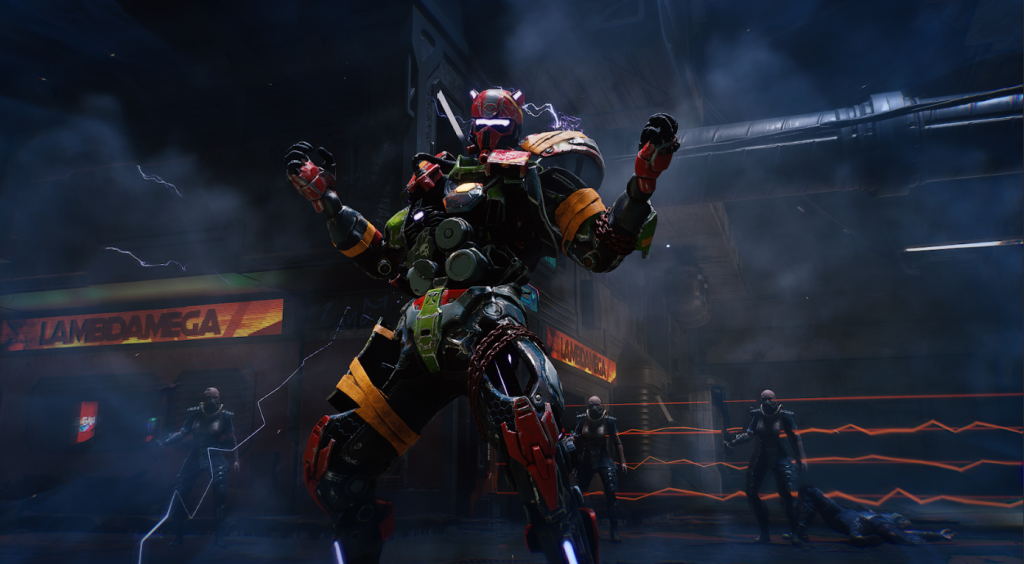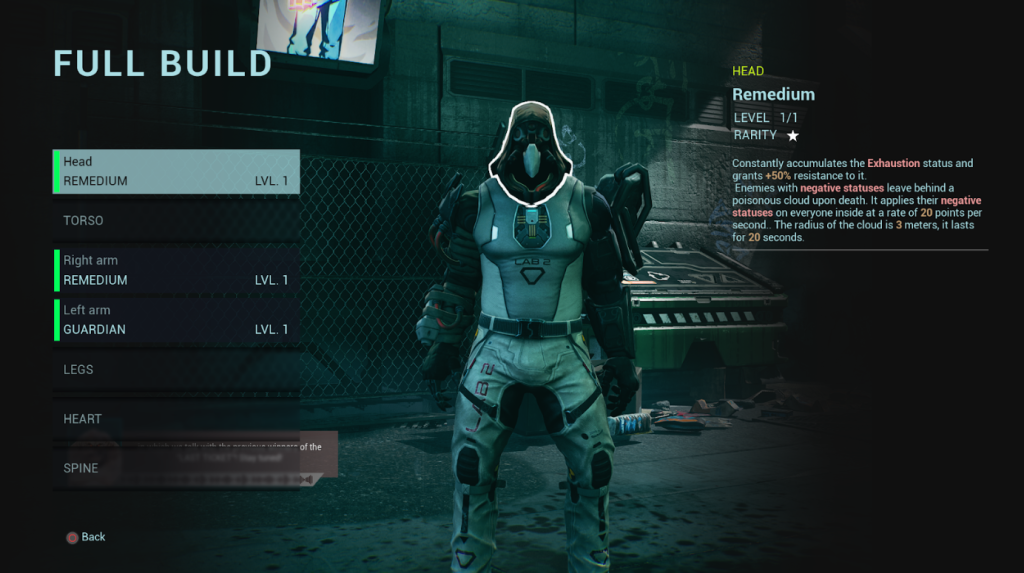KIBORG, developed by Sobaka Studio, storms onto PlayStation 4 & 5, Xbox Series X|S and One, and PC via Steam on April 30, 2025. This relentless rogue-lite beat ’em up thrusts players into the shoes of Morgan Lee, a wrongly accused convict sentenced to 1,300 years on the galaxy’s most notorious prison planet. The only hope for freedom? Survive and win “The Last Ticket,” a blood-soaked game show broadcast for the entertainment of a dystopian universe.

Setting and Narrative: A Dystopian Game Show with No Escape
Morgan Lee’s predicament is as grim as they come. Framed for war crimes and condemned to a sentence longer than any human lifespan, he finds himself trapped on a planet where death is no release-every demise is met with forced revival, ensuring he serves every second of his sentence. The only loophole is victory on Cable Galactica’s “The Last Ticket,” a televised gauntlet of violence hosted by the grotesque Volkov, who delights in the suffering and spectacle.
The game’s world is meticulously crafted, with each arena set in a decaying tower block, dripping with atmosphere and punctuated by the ever-present commentary of Volkov. While the game show premise is compelling and reminiscent of classics like The Running Man and Squid Game, the broadcast element feels somewhat underutilized, lacking features like live audience counters or dynamic crowd reactions that could have deepened immersion.
Core Gameplay: Arena Brawling Meets Roguelike Progression
At its heart, KIBORG is an arena brawler fused with roguelike progression. Each run begins with Morgan fighting through waves of enemies using only his fists and feet. As he advances, he unlocks a randomized arsenal of melee and ranged weapons-everything from sledgehammers and road signs to shotguns and futuristic firearms. The combat system is designed to be weighty and impactful; every punch, kick, and weapon swing feels substantial, with satisfying animations and enemy reactions.
Dodging, parrying, and blocking are not optional-they’re essential. Players must learn enemy attack patterns and time their defenses precisely, especially when facing elite foes or bosses. A well-timed parry not only cancels incoming damage but also opens a window for devastating counterattacks, injecting a rhythmic dance into every encounter.
Despite these strengths, the combat loop can become repetitive. There’s no true combo system; what the game calls “advanced moves” are often slow, leave you vulnerable, and don’t deal enough damage to justify their risk. Most encounters devolve into repeating a handful of basic attacks, which can feel dull over time. Additionally, entering a combat zone abruptly slows your character, breaking the flow established by the game’s otherwise fast-paced movement.

Weapons, Upgrades, and Customization: Building Your Perfect Cyborg
KIBORG’s upgrade system is where its roguelite DNA shines. After each arena, players choose from a pool of cybernetic implants and mutations, each offering unique abilities and trade-offs. Implants are divided into classes-legs, torso, heart, spine, arms, head-and can dramatically alter Morgan’s playstyle and appearance. For example, the “Thundergod” set adds electric damage and teleportation, while “Gunslinger” boosts ranged weapon performance.
Mutations add another layer of strategy, often granting powerful buffs at the cost of significant drawbacks. Some may increase your health but disable ranged weapons, while others might limit implant choices for greater power. Overloading Morgan with too many enhancements can trigger negative effects, forcing players to balance risk and reward with every upgrade.
Weapons themselves are varied and often come with humorous names, elemental effects, and unique stats. However, weapon degradation and limited ammo force players to constantly adapt, balancing the use of melee and firearms. While this adds tension, the gunplay can feel imprecise unless heavily upgraded, and melee weapons sometimes lack the satisfying feedback of bare-fisted combat.
Difficulty, Replayability, and Game Structure
KIBORG offers seven difficulty levels, but aside from scaling enemy health and damage, little changes between runs. You’ll face the same bosses, on the same maps, with the same enemies each time. After completing the first difficulty, the game expects players to grind through the remaining six without introducing new content, which can make progression feel more like a chore than a reward.
Enemy spawn design is inconsistent; some maps end in under a minute with just a handful of foes, while others overwhelm you with endless waves. This uneven pacing can disrupt the game’s flow and make some runs feel either trivial or frustratingly chaotic.
Each run is structured around three main floors, each culminating in a boss battle. After clearing a floor, players can invest earned currency into a sprawling skill tree, unlocking permanent upgrades, new weapons, and enhancements for future attempts. This meta-progression is essential for tackling higher difficulties and adds a layer of long-term strategy to the otherwise punishing roguelike loop.

Technical Details and Presentation
KIBORG is built on Unreal Engine 5, delivering gritty, atmospheric visuals that match its dystopian setting6. The game supports both singleplayer and multiplayer modes, with real-time pacing. System requirements are modest, requiring at least an Intel Core i5-3470 or AMD FX-8350 CPU, 4 GB RAM, and a GeForce GTX 660 or Radeon equivalent GPU.
The user interface is functional but minimal. Notably, the game offers little in the way of onboarding or tutorials. Players are dropped into the action with almost no explanation, aside from a vending machine that plays short control videos. While this may appeal to veterans, newcomers may feel lost in the early stages. Arena combat provides a welcome break from the standard room-to-room fighting, and weapon sets with unique ailments and stats add much-needed variety.
Personal Experience: High Ambition, Uneven Execution
From my own time with KIBORG, the game’s concept and mechanics stand out as its greatest strengths. The setting is captivating, and the core ideas-limited health regeneration, a finite number of dodges per run, and earning ammo through skillful play-are genuinely innovative.
However, several issues mar the experience. The lack of a true combo system makes combat repetitive, and “advanced moves” are too slow and weak to be useful. The seven difficulty levels add little beyond stat inflation, and the grind required to see new content is excessive. Enemy spawn rates are wildly inconsistent, with some arenas ending in seconds and others dragging on with endless mobs.
Despite these flaws, the build variety and customization options are impressive. Watching Morgan morph into a cybernetic powerhouse is satisfying, and the strategic choices around implants and mutations keep each run feeling fresh, at least for the first few hours. The lack of a proper introduction or narrative context is disappointing, especially given the game’s rich premise.
Conclusion
KIBORG is a bold, brutal roguelite brawler that excels in concept and core combat but stumbles in execution and variety. Its cybernetic upgrade system and atmospheric setting offer a compelling foundation, and the moment-to-moment brawling can be deeply satisfying when everything clicks. However, repetitive encounters, lack of meaningful difficulty progression, and uneven pacing hold it back from true greatness.
For those seeking a challenging, customizable arena brawler with a dystopian edge, KIBORG delivers a solid-if flawed-experience. With further updates and balance tweaks, it has the potential to become a standout in the genre. As it stands, KIBORG is a promising meal with a perfectly cooked main course but some underwhelming sides-worth a taste for fans of the genre, but not yet the feast it aspires to be